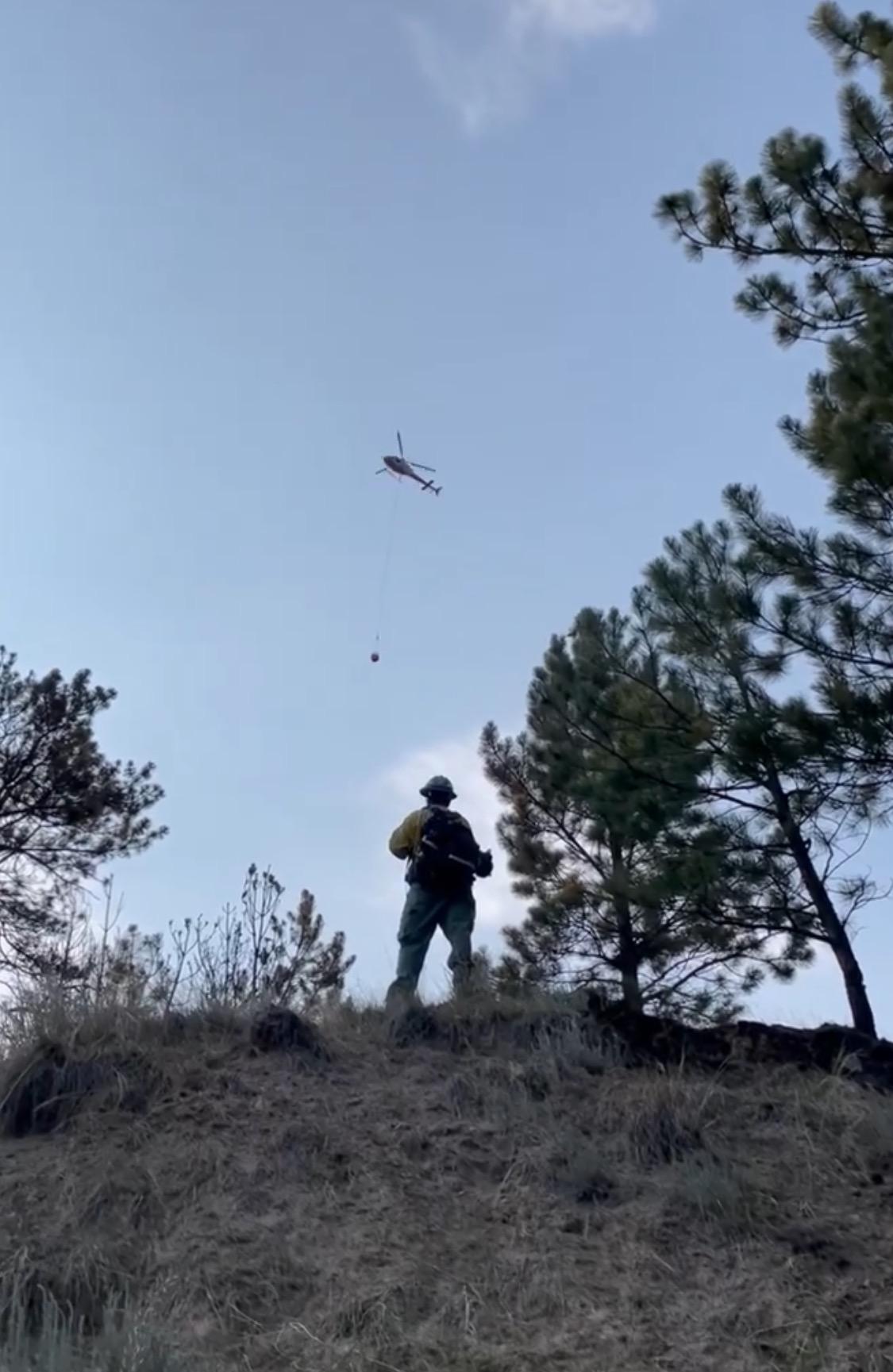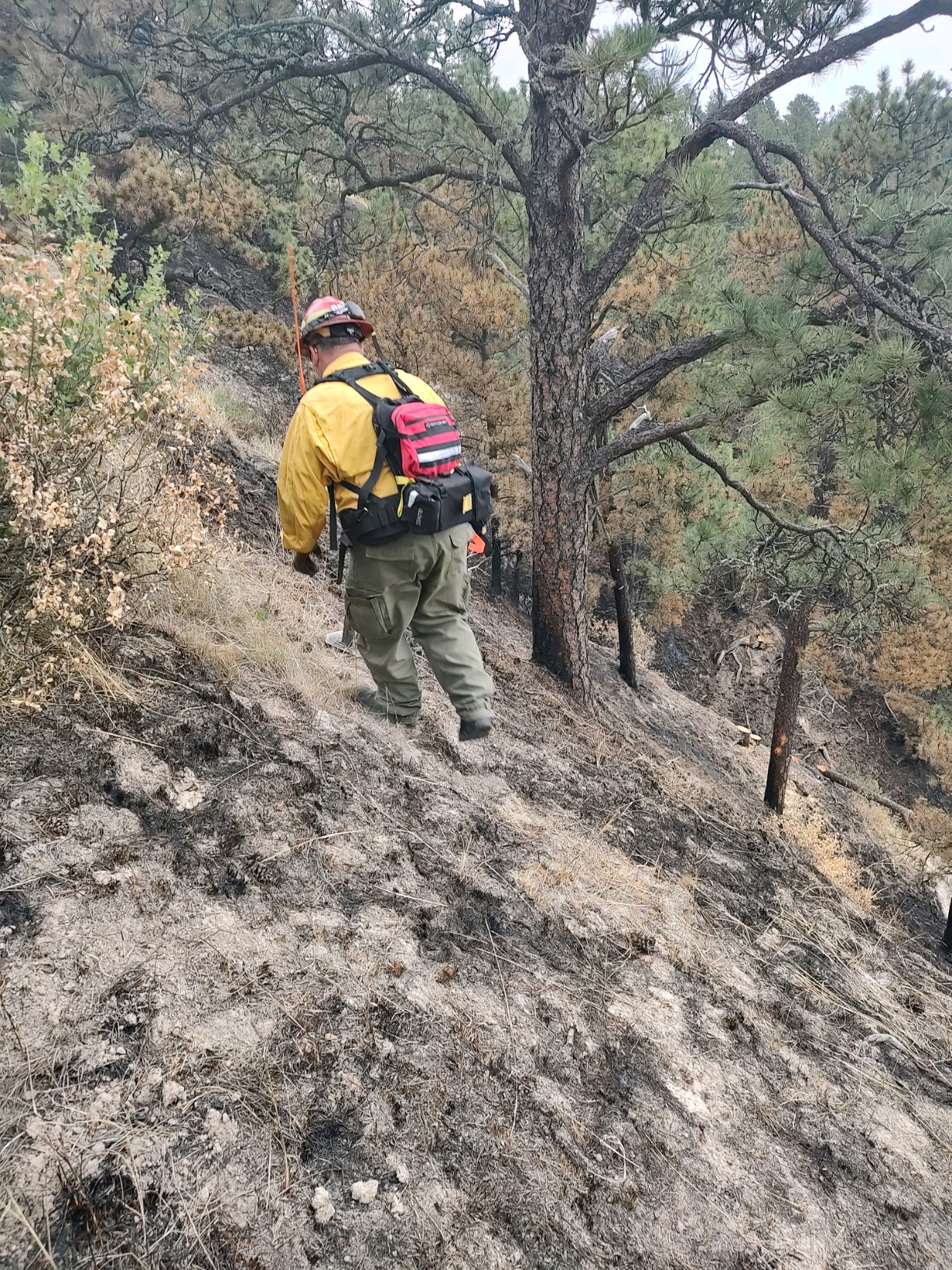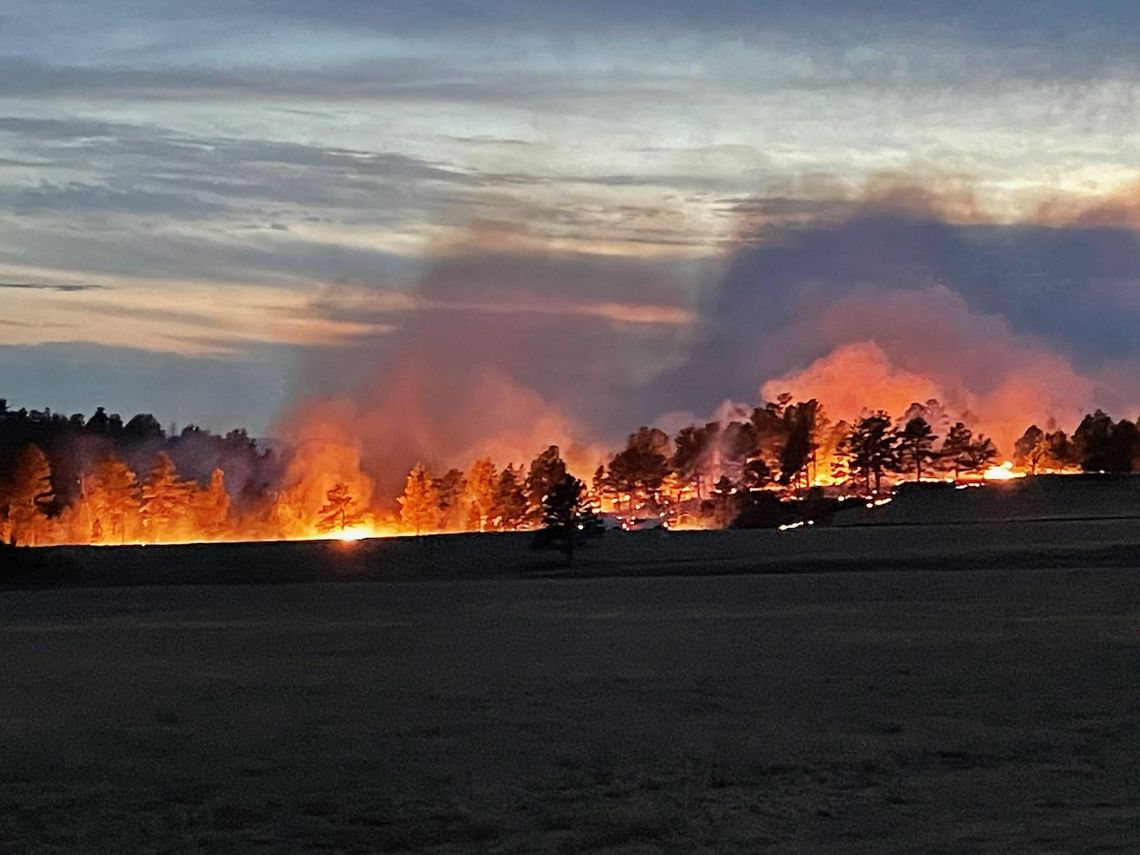

When there’s a fire, most people understandably run in the other direction. However, a couple of North Marshall firefighters did the opposite this summer when they traveled to West River to serve an important purpose. Tyler Cape and Nathan Dinger, both of Britton, spent time fighting fires far from home as part of the Coyote 1 Wildland Association.
The Coyote 1 Wildland Association was created by fire departments in Eastern South Dakota with a common goal: to further the involvement of South Dakota fire departments in wildland fire management through training and fire suppression. The organization is made up of 13 departments from the eastern side of the state that work together to tackle challenging wildfires, including grass and forest fires.
North Marshall Fire Department in Britton became a member of Coyote 1 two years ago. Dinger and Cape describe the organization as a resource-sharing group. “This means that we share training opportunities, personnel, and equipment,” Cape explains.
Cape, who has been a firefighter for 15 years, is no stranger to wildland fires. In the past, he worked with the U.S. Fish and Wildlife Service, fighting fires and assisting with prescribed burns. He has traveled extensively to help fight fires across the country, including in Texas, Colorado, Nebraska, North Dakota and Montana. Cape is currently progressing toward becoming an Engine Boss, a role that can take years to achieve. An Engine Boss leads a single fire engine crew and is responsible for their safety on wildland and prescribed fire incidents.
This past summer, Cape traveled to West River twice for two-week stints. He spent three weeks working on the Pine Ridge Reservation and one week in the Black Hills National Forest.
Dinger, a 22-year firefighting veteran, took his first trip west in August for ten days. He spent time fighting aggressive fires, often working alongside Native American fire crews. “It was an amazing learning experience,” Dinger notes, “and often a lot of fun.”
Cape and Dinger explain that they get called out west by noting their availability with Coyote 1. They might hop on with another crew or truck heading that way. Once there, they may fight active fires, including large forest fires. Cape helped battle the Bennett Canyon fire in August, which burned around 400 acres. They emphasize that there are more active fires out west than many people realize in this corner of the state.
“We might also be on duty,” said Dinger. “We might take the place of other firefighters who have been called to other fires.”
The two firefighters stress that wildland firefighting is significantly different from fighting structure fires, like those they might encounter in Marshall County. “The gear, training, and tactics are all different,” Cape explains. “We also might be working with airplanes, helicopters, and bulldozers.”
He adds that much of the work is done by hand. “We often work where fire trucks can’t access, so there’s a lot of digging and the use of hand tools and shovels.” Luxuries are few in the field, they confirm. You might occasionally stay in a hotel or camper, but more often, you’re sleeping in a tent on the ground near where you’re needed.
The work is both physically and mentally taxing, the men admit. Shifts can range from 12 to 16 hours, sometimes stretching to 22 hours. Dinger described hiking up hillsides for several days as part of his tour.
“Every fire is different and requires different tactics,” Cape emphasizes. “We’re lucky to work with great crews out there.”
Another tough part of the job is being away from their families for extended periods, both Cape and Dinger admit. Both men have partners and children, but they say their families are very supportive of their work. Cape adds that his employers at Truss Pros and Precision Wall have also been phenomenal in allowing him to travel to fight fires.
Despite the challenges, both Cape and Dinger find wildland firefighting rewarding. “There are definitely days when it’s not a good time,” Cape acknowledges, “but then you realize that house or that community is still there because of our efforts.”
“It’s a way of giving back,” Dinger echoes. “We’re proud of what we do here at North Marshall, and this is one more way of helping.”
While both firefighters are currently home, they anticipate volunteering with Coyote 1 again when they are able. Though such trips require personal and family sacrifices, they are proud to serve and answer the call.



